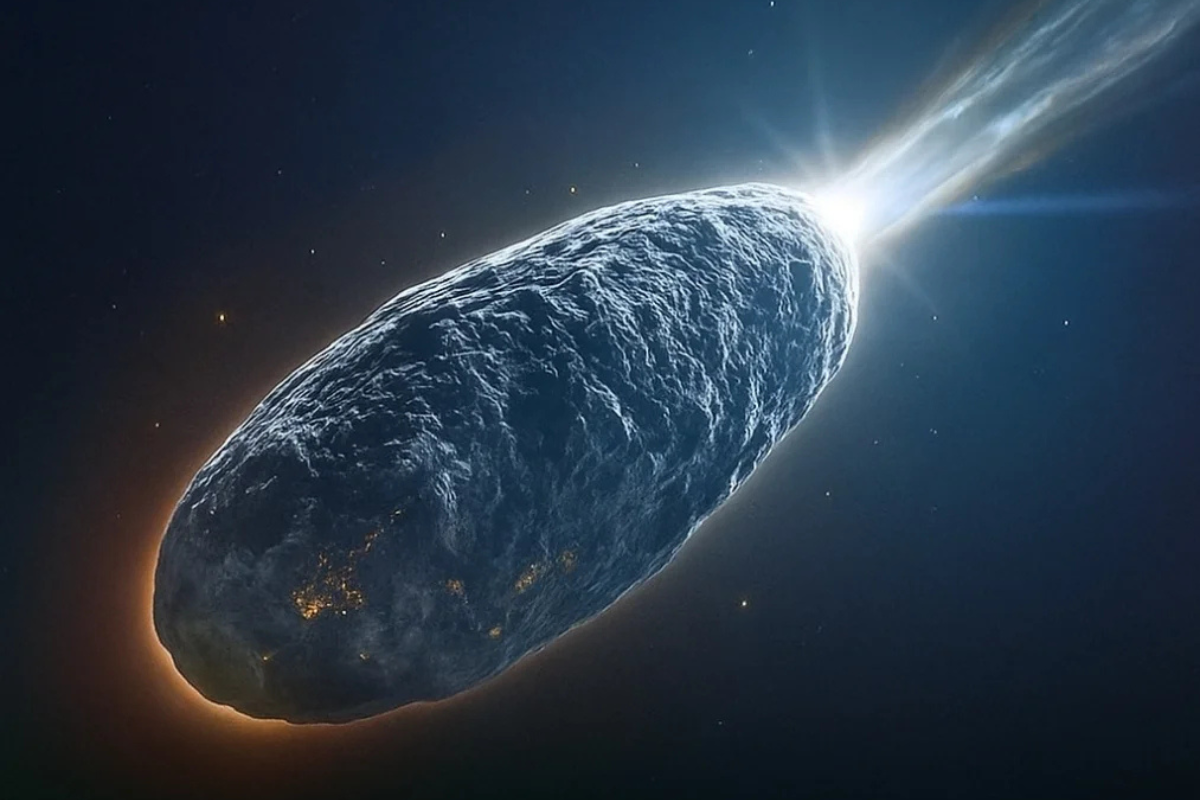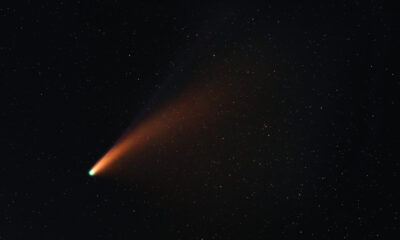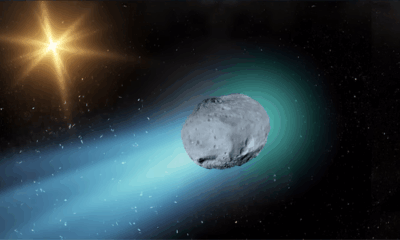Science
Harvard’s Avi Loeb Proposes Alien Technology Behind 3I/ATLAS

Astrophysicist Avi Loeb from Harvard University has raised a provocative question regarding the interstellar object known as 3I/ATLAS. He suggests that if the object, which seems to behave like a comet, does not exhibit a detectable gas cloud, it could imply that we are witnessing alien technology. This hypothesis challenges traditional explanations for celestial objects and has garnered significant attention since its discovery.
3I/ATLAS was first identified on July 1, 2025, by the ATLAS survey team in Rio Hurtado, Chile. It holds the designation of the third confirmed interstellar object to pass through our solar system. Unlike typical comets that orbit the Sun, 3I/ATLAS originates from beyond our solar system’s heliosphere, likely ejected from another star system billions of years ago. Its hyperbolic trajectory indicates that it is moving at extraordinary speeds, at times reaching up to 244,600 km/h, which allows it to escape the Sun’s gravitational pull.
The recent close approach to the Sun, known as perihelion, occurred on October 29, 2025, at a distance of approximately 1.36 astronomical units (AU). This event intensified the scrutiny of 3I/ATLAS, especially as astronomers noted unusual behaviors. Loeb emphasized that the surface area necessary to account for the mass flow observed in its jets would require an object larger than Manhattan Island, making the absence of a visible gas cloud particularly noteworthy.
The phenomenon of non-gravitational acceleration has drawn interest from scientists, including Davide Farnocchia, a navigation engineer at NASA. Observations using the ALMA telescope revealed a 4 arcsecond shift in the object’s predicted path, indicating an additional force at work, equivalent to 0.02 mm/s² over 50 days. This resulted in a velocity change of 86 m/s, which included a radial push moving it away from the Sun and a tangential nudge.
In typical cometary behavior, such acceleration is often attributed to the ‘rocket effect’—a thrust generated when ice sublimates and ejects gas and dust. However, the latest observations of 3I/ATLAS revealed no significant coma or traditional comet tail, casting doubt on how efficiently gas is being released. Furthermore, the object’s color changed from reddish to deep blue as it approached the Sun, a shift that is atypical for comets and may indicate ionized emissions rather than dust.
Loeb’s analysis highlighted several anomalies associated with 3I/ATLAS, including its orbit close to the solar system’s ecliptic plane and its peculiar chemical composition. The interstellar object exhibits high levels of carbon dioxide and nickel, with minimal iron or water. It also displayed negative light polarization, an unusual characteristic for a comet, and jets of material emanating in various directions without forming a continuous tail.
The implications of 3I/ATLAS extend beyond its immediate observations. The object may offer insights into the diverse environments present outside our solar system, contributing to theories on planetary formation. Future observations from NASA’s ExoMars TGO, ESA’s Hubble, and ground-based facilities like the Keck Observatory will be critical in confirming predictions about mass loss from the object.
If subsequent observations planned for December 2025 continue to show a lack of a gas cloud, the debate may shift toward considering artificial propulsion as a viable explanation. This perspective parallels the earlier discussions surrounding ‘Oumuamua, which also exhibited unusual acceleration without detectable gas release.
While some argue that the peculiarities of 3I/ATLAS can be explained by natural variability, such as the effects of galactic cosmic rays on its surface, the ongoing investigations will be vital in determining the object’s true nature. The existence of high carbon dioxide and metal vapors could suggest that it formed in a carbon-rich environment during its early stages.
In summary, while the acceleration of 3I/ATLAS has puzzled many, recent research indicates that a natural, albeit highly unusual, explanation may still be valid. The interdisciplinary nature of astronomy and the collaboration of various scientific disciplines highlight the importance of integrating empirical data with innovative theoretical ideas in understanding the cosmos. As more data becomes available, the narrative surrounding 3I/ATLAS will evolve, continuing to challenge our understanding of celestial phenomena.
-

 Entertainment2 months ago
Entertainment2 months agoAnn Ming Reflects on ITV’s ‘I Fought the Law’ Drama
-

 Entertainment3 months ago
Entertainment3 months agoKate Garraway Sells £2 Million Home Amid Financial Struggles
-

 Health2 months ago
Health2 months agoKatie Price Faces New Health Concerns After Cancer Symptoms Resurface
-

 Entertainment2 months ago
Entertainment2 months agoCoronation Street’s Carl Webster Faces Trouble with New Affairs
-

 Entertainment2 months ago
Entertainment2 months agoWhere is Tinder Swindler Simon Leviev? Latest Updates Revealed
-

 Entertainment3 months ago
Entertainment3 months agoKim Cattrall Posts Cryptic Message After HBO’s Sequel Cancellation
-

 Science4 weeks ago
Science4 weeks agoBrian Cox Addresses Claims of Alien Probe in 3I/ATLAS Discovery
-

 Entertainment3 months ago
Entertainment3 months agoMarkiplier Addresses AI Controversy During Livestream Response
-

 Entertainment2 months ago
Entertainment2 months agoOlivia Attwood Opens Up About Fallout with Former Best Friend
-

 Entertainment3 months ago
Entertainment3 months agoMasterChef Faces Turmoil as Tom Kerridge Withdraws from Hosting Role
-

 Entertainment4 months ago
Entertainment4 months agoSpeculation Surrounds Home and Away as Cast Departures Mount
-

 World2 months ago
World2 months agoCole Palmer’s Mysterious Message to Kobbie Mainoo Sparks Speculation





















